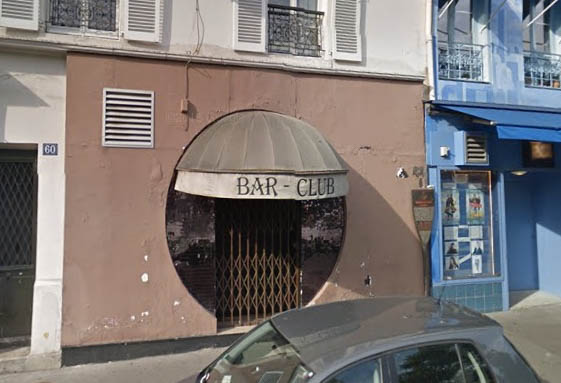
For those of you familiar with Paris, you know that the Left Bank is considered more cutting edge today than the Right Bank. If you lived in Paris during the 1920s and the 1930s, the avant-garde scene would have been on the Right Bank. In particular, the Montmartre and the Pigalle districts (18e) were heavily populated with artists, bohemians, and a strong gay community. However, the Left Bank was home to the first and most popular lesbian nightclub in Paris. Located at 60, Boulevard Edgar Quinet in the Montparnasse (14e) district, Le Monocle opened its doors in the 1920s. Our story today isn’t so much about the nightclub as it is one of its most infamous patrons.
Lulu and Tuxedos
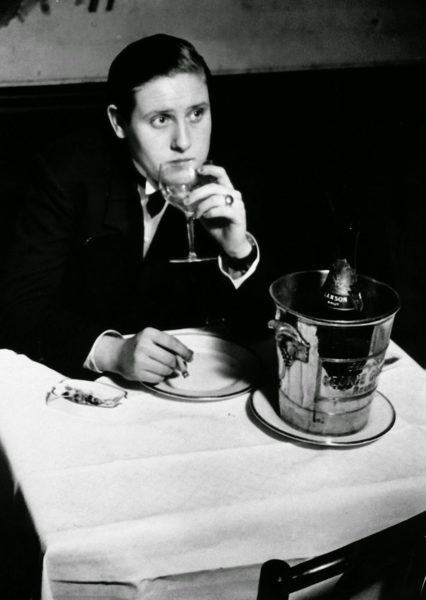
The first owner of Le Monocle was Lulu. She set the style of dress for the club over the next twenty years. Lulu’s club attracted women who liked to dress up in tuxedos (and men’s suits), cut their hair short, and for added effect, wear monocles (ergo, the name of the club). In fact, women would wear a monocle in public to announce their sexual orientation.
The nightclub was shut down in 1940 after the Germans invaded France. Gay men and women were targeted by the Nazis for detention, deportation, and ultimately, elimination. The building where the club was located is still in existence. You enter through the original entrance which is shaped in a circle–it was meant to imitate a monocle. I’m not too sure what is behind the doors, as the exterior needs a lot of paint. But the awning still advertises a bar and café. I think it’s still called Le Monocle but Sandy and I will stop by on our next trip to Paris and see what happens.
Most of the Paris nightclubs were small and tucked away in inconspicuous locations. Their patrons found them through word of mouth. This was opposite of the more well known and publicized clubs such as the Moulin Rouge, Cabaret le Shéhérazade, Moulin de la Galette, and the Cirque Medrano. Le Monocle would have been lost in the historical records if not for George Brassaï (1899–1984).
George Brassaï
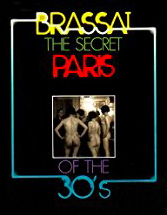 Brassaï was a renowned Hungarian photographer who moved permanently to Paris in the early 1920s. By the 1930s, he had built a substantial reputation in Paris for his photos of the street people and the “underbelly” of Paris. Over time, Brassaï became friends with Pablo Picasso (artist), Henry Miller (American writer), Salvador Dalí (artist), and Henri Matisse (artist). He also befriended the owner of Le Monocle who invited Brassaï to visit the nightclub in 1932 for the purpose of photographing its patrons. These photos provide us with the historical gateway to our knowledge of the nightclub. If you’re interested, Brassaï wrote and published a book, The Secret Paris of the 30’s, about his experiences during the edgy days of pre-war Paris.
Brassaï was a renowned Hungarian photographer who moved permanently to Paris in the early 1920s. By the 1930s, he had built a substantial reputation in Paris for his photos of the street people and the “underbelly” of Paris. Over time, Brassaï became friends with Pablo Picasso (artist), Henry Miller (American writer), Salvador Dalí (artist), and Henri Matisse (artist). He also befriended the owner of Le Monocle who invited Brassaï to visit the nightclub in 1932 for the purpose of photographing its patrons. These photos provide us with the historical gateway to our knowledge of the nightclub. If you’re interested, Brassaï wrote and published a book, The Secret Paris of the 30’s, about his experiences during the edgy days of pre-war Paris.
The Hyena of the Gestapo
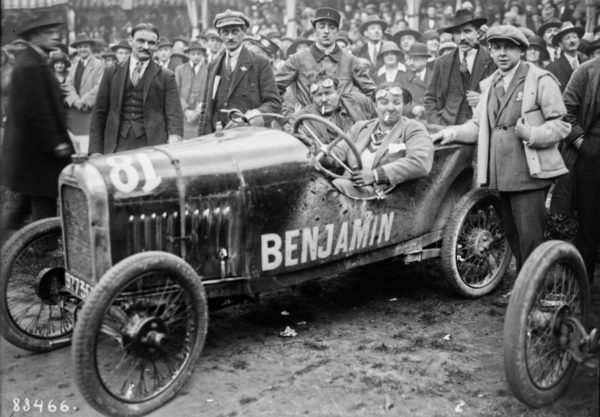
Violette Morris (1893–1944) was a French athlete, racecar driver (she had a voluntary double mastectomy so she could fit easier behind the wheel), Olympic level shot putter and discus/javelin thrower. She also played football (i.e., soccer) on the French women’s national team, became a champion boxer (against men), and Greco-Roman wrestling. Violette was bisexual and a frequent patron of Le Monocle nightclub during the 1930s. Those weren’t her only activities during the thirties.
Because Violette was a well-known bisexual woman, the French Women’s Athletic Federation refused to allow her to participate in the 1928 Olympics. The rejection by this agency left Violette with a strong dislike of the French government. By the end of December 1935, the Nazis had successfully recruited her into the SS with the code name of Hyena. Adolph Hitler invited her to attend the 1936 Berlin Olympics as his personal guest.
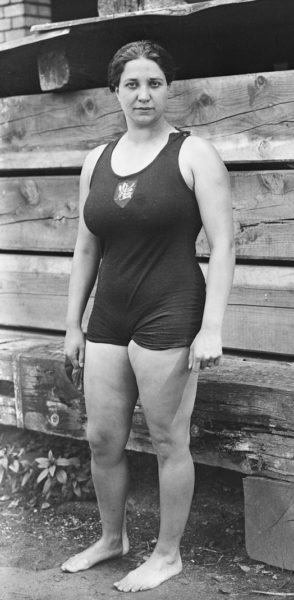
Violette was responsible for turning over the plans to the Germans for the French Maginot Line, strategic parts of Paris, and the engineering plans for the French tank known as the Somua S35. All of this contributed significantly to the success of the German invasion of France and in particular, Paris. During the occupation years, Violette partnered with the Bonny-Lafont Gang (The French Gestapo) and participated in their tortures (primarily women prisoners) and executions of members of the French Resistance. She also was responsible for infiltrating and arresting members of the British led teams of the Special Operations Executive (SOE). Violette’s collaboration with the Nazis was well known around town.
Bullet Riddled Body
By 1944, the French Resistance had had enough of Violette Morris. On 26 April 1944 while driving in a car with fellow collaborators, Violette and all of her party (including two children) were gunned down outside Paris by the French Resistance. Her body went unclaimed and her remains were thrown into a communal grave. I’m not sure if the pit was ever marked. While speculative, I would imagine that had she not been killed in April, Violette would have been one of the first to be arrested shortly after the Liberation and quickly executed without trial by the French partisans.
What’s New With Sandy and Stew?
Sandy and I seem to be knee deep into preparing for our research trip to Paris in September. Remember, if any of you are planning to be in Paris the second and third week of September 2017, let me know. We can plan to get together over a glass of wine one of those days.
We were back in Nashville in late May for the purpose of closing the sale on our Nashville house. I took the opportunity to meet with Guenievre Milliner. She owns the wonderful French market called Little Gourmand. Guenievre was gracious to accept some of our books to sell in the store. For all our friends in Nashville, we highly suggest you visit Little Gourmand in Green Hills (2209 Bandywood Drive). It’s a great way to sample French food items without having to cross the pond.
Someone Is Commenting On Our Blogs
Thanks to Cara J. for her comments on the French Revolution books. She told us she was going to Paris for the first time and her agenda was filled with Revolution stuff to see (including our walks). Cara, we hope you had a great time in Paris and you’ll return again soon to expand your knowledge about the city.
Our friend Mark V. is scheduled to write our next blog post. He is an economist and the working title for the blog is La Revolution Français – The Economics of Eating Cake. It will be a fun read.
Also thanks to our friend Rebecca S. for her question concerning Nancy Wake. Rebecca wanted to know if we thought the main character in the historical fiction novel The Nightingale (Kristin Hannah) was based on Nancy. Despite some similarities, the character of Isabelle is based on a 19-year-old Belgian woman (Andrée De Jongh) who created an escape route over the Pyrenees into Spain.
If there is a topic you’d like to see a blog written about, please don’t hesitate to contact me. I love hearing from you so keep those comments coming.
Why Would You Want to Buy Our “Walks Through History” Books?
Simple.
You like to travel and experience history and historical events. You like to see original buildings that had a significant impact on the people and events of the history you’re engaged with. You want to know the stories behind the brick and mortar in front of you.
The walking tour books are meticulously researched so you can go directly to those sites and learn about the building’s history as well as an introduction to some of the more interesting people associated with it.
Thank You
Sandy and I appreciate you visiting with us. We have some exciting things on the horizon and we’ll keep you updated as we go along.
Share This:
Follow Stew:
Find Stew’s books on Amazon and iBooks.
Please note that we do not and will not take compensation from individuals or companies mentioned or promoted in the blogs.
Walks Through History
Copyright © 2017 Stew Ross


